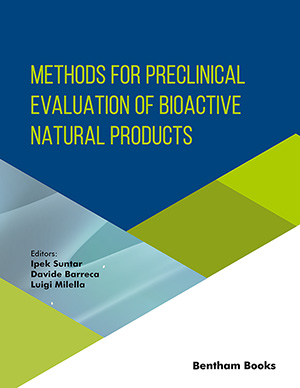Abstract
Although Amyloid beta plaque and neurofibrillary tangles are considered the two main hallmarks of Alzheimer’s disease (AD), the mechanism by which they contribute is not clearly understood. Cellular senescence (CS) has been demonstrated to be a key characteristic of AD. Recent research suggests that persistent buildup of senescent cells over time results in protracted activation of inflammatory stress as an organism ages because of the accumulation of irreversible DNA damage and oxidative stress as well as the deterioration of immune system function. Studies on both humans and animals have shown evidence that CS is a crucial factor in AD. The brains of AD patients have been found to have senescent glial cells and neurons, and removal of these senescent cells results in a decrease in Amyloid beta plaque and Neurofibrillary tangles, along with improved cognitive functions. This review summarises recent results and the mechanism by which CS contributes to the development of AD, and how the elimination of senescent cells may be a therapeutic target in the management of AD.
Keywords: Cellular senescence, Alzheimer’s disease, Senescent cells, Therapeutic target, Neurofibrillary tangles, Cognitive functions.
[http://dx.doi.org/10.3390/ijms232213954] [PMID: 36430432]
[http://dx.doi.org/10.3389/fnins.2021.666958] [PMID: 34220427]
[http://dx.doi.org/10.1007/BF00308809] [PMID: 1759558]
[http://dx.doi.org/10.1212/WNL.58.12.1791] [PMID: 12084879]
[http://dx.doi.org/10.1016/S0140-6736(20)32205-4] [PMID: 33667416]
[http://dx.doi.org/10.1016/j.tins.2021.06.007] [PMID: 34366147]
[http://dx.doi.org/10.1016/j.cell.2013.05.039] [PMID: 23746838]
[http://dx.doi.org/10.1016/j.tcb.2018.02.001]
[http://dx.doi.org/10.1177/0300985820943841] [PMID: 32744147]
[http://dx.doi.org/10.1172/JCI95148] [PMID: 29608137]
[http://dx.doi.org/10.1038/nrm2233] [PMID: 17667954]
[http://dx.doi.org/10.1038/nrm3823] [PMID: 24954210]
[http://dx.doi.org/10.1126/science.1061032]
[http://dx.doi.org/10.1016/j.biocel.2004.10.013] [PMID: 15743671]
[http://dx.doi.org/10.1172/JCI200420663] [PMID: 14702100]
[http://dx.doi.org/10.1016/0014-4827(61)90192-6] [PMID: 13905658]
[http://dx.doi.org/10.1152/physrev.00020.2018] [PMID: 30648461]
[http://dx.doi.org/10.1038/s41583-020-0325-z] [PMID: 32601397]
[http://dx.doi.org/10.1038/s41467-018-07825-3] [PMID: 30575733]
[http://dx.doi.org/10.3389/fncel.2020.00016] [PMID: 32116562]
[http://dx.doi.org/10.1038/nature13193] [PMID: 24848057]
[http://dx.doi.org/10.3389/fcell.2021.645593] [PMID: 33855023]
[http://dx.doi.org/10.1007/978-3-319-26239-0_13]
[http://dx.doi.org/10.1016/S0960-9822(98)70137-X] [PMID: 9512419]
[http://dx.doi.org/10.1186/1471-2164-12-355] [PMID: 21740549]
[http://dx.doi.org/10.2174/1381612811319090017] [PMID: 23061727]
[http://dx.doi.org/10.1038/s41580-020-00314-w] [PMID: 33328614]
[http://dx.doi.org/10.1016/0014-4827(91)90453-2] [PMID: 1652450]
[http://dx.doi.org/10.1093/emboj/cdg417] [PMID: 12912919]
[http://dx.doi.org/10.1038/nm.4000] [PMID: 26646499]
[http://dx.doi.org/10.1038/nrc3960] [PMID: 26105537]
[http://dx.doi.org/10.1080/10409238.2017.1360836] [PMID: 28799433]
[http://dx.doi.org/10.1038/nrm1987] [PMID: 16921403]
[http://dx.doi.org/10.1101/gad.415507] [PMID: 17344414]
[http://dx.doi.org/10.1016/j.cellsig.2011.12.006] [PMID: 22182507]
[http://dx.doi.org/10.1016/j.celrep.2021.109419] [PMID: 34289368]
[PMID: 9176387]
[http://dx.doi.org/10.1007/s12035-020-02109-8] [PMID: 32895786]
[http://dx.doi.org/10.3390/ijms23041989] [PMID: 35216123]
[http://dx.doi.org/10.1371/journal.pone.0045069] [PMID: 22984612]
[http://dx.doi.org/10.3389/fnagi.2017.00277] [PMID: 28912710]
[http://dx.doi.org/10.1111/acel.12840] [PMID: 30126037]
[http://dx.doi.org/10.3390/ijms23084351] [PMID: 35457168]
[http://dx.doi.org/10.1038/s41586-018-0543-y] [PMID: 30232451]
[http://dx.doi.org/10.1021/acschemneuro.8b00334] [PMID: 30052418]
[http://dx.doi.org/10.1089/rej.2018.2155] [PMID: 30489222]
[http://dx.doi.org/10.1172/JCI95145] [PMID: 29457783]
[http://dx.doi.org/10.1111/j.1474-9726.2008.00402.x] [PMID: 18489730]
[http://dx.doi.org/10.1111/j.1471-4159.2006.04369.x] [PMID: 17250685]
[http://dx.doi.org/10.3390/ijms19102937] [PMID: 30261683]
[http://dx.doi.org/10.1016/j.yexcr.2010.06.021] [PMID: 20620137]
[PMID: 12941806]
[http://dx.doi.org/10.3389/fneur.2020.00929] [PMID: 33013631]
[http://dx.doi.org/10.1111/acel.13145] [PMID: 32323422]
[http://dx.doi.org/10.1038/ni.1636] [PMID: 18604209]
[http://dx.doi.org/10.3389/fnagi.2020.00148] [PMID: 32581763]
[http://dx.doi.org/10.1523/JNEUROSCI.3442-16.2017] [PMID: 28275161]
[http://dx.doi.org/10.3389/fnagi.2016.00160] [PMID: 27458370]
[http://dx.doi.org/10.1098/rsob.170228] [PMID: 29237809]
[http://dx.doi.org/10.1111/nan.12338] [PMID: 27442752]
[http://dx.doi.org/10.1111/jnc.14860] [PMID: 31478208]
[http://dx.doi.org/10.1089/rej.2006.9096] [PMID: 17378753]
[http://dx.doi.org/10.1002/glia.10301] [PMID: 14648548]
[http://dx.doi.org/10.1007/s00702-017-1745-4] [PMID: 28676934]
[http://dx.doi.org/10.1038/nn.4325] [PMID: 27294511]
[http://dx.doi.org/10.1093/brain/awu040] [PMID: 24618270]
[http://dx.doi.org/10.1038/nrd.2017.116] [PMID: 28729727]
[http://dx.doi.org/10.1016/j.freeradbiomed.2021.05.003] [PMID: 33989756]
[http://dx.doi.org/10.5772/intechopen.101585]
[http://dx.doi.org/10.1002/advs.202002611] [PMID: 33304768]
[http://dx.doi.org/10.1038/nature10600] [PMID: 22048312]
[http://dx.doi.org/10.1038/s43587-021-00121-8] [PMID: 34841261]
[http://dx.doi.org/10.1172/JCI95149] [PMID: 29608140]
[http://dx.doi.org/10.1016/S0047-6374(01)00281-0] [PMID: 11557274]
[http://dx.doi.org/10.1038/ncomms11190] [PMID: 27048913]
[http://dx.doi.org/10.1111/acel.12344] [PMID: 25754370]
[http://dx.doi.org/10.1038/s41593-019-0372-9] [PMID: 30936558]
[http://dx.doi.org/10.1186/1742-2094-9-117] [PMID: 22673542]
[http://dx.doi.org/10.1016/j.neurobiolaging.2011.10.027] [PMID: 22133278]
[http://dx.doi.org/10.1158/1078-0432.CCR-08-2253] [PMID: 19276246]
[http://dx.doi.org/10.14283/jpad.2021.62] [PMID: 35098970]
[http://dx.doi.org/10.1016/j.mad.2021.111589] [PMID: 34687726]
[http://dx.doi.org/10.1016/j.ebiom.2018.09.015] [PMID: 30279143]
[http://dx.doi.org/10.1093/gerona/glx104] [PMID: 28575152]
[http://dx.doi.org/10.1038/nm.4010] [PMID: 26657143]
[http://dx.doi.org/10.1111/acel.12445] [PMID: 26711051]
[http://dx.doi.org/10.1158/0008-5472.CAN-07-5836] [PMID: 18451170]
[http://dx.doi.org/10.1016/j.ijrobp.2017.02.216]
[http://dx.doi.org/10.1007/s00277-010-0948-7] [PMID: 20387067]
[http://dx.doi.org/10.1038/nchembio.332] [PMID: 20190765]
[http://dx.doi.org/10.1172/JCI28281] [PMID: 17200714]
[http://dx.doi.org/10.1016/j.ccr.2006.08.027] [PMID: 17097561]
[http://dx.doi.org/10.1016/j.ccr.2006.10.006] [PMID: 17097560]
[http://dx.doi.org/10.18632/aging.101202] [PMID: 28273655]
[http://dx.doi.org/10.18632/aging.101100] [PMID: 27913811]
[http://dx.doi.org/10.1038/srep26357] [PMID: 27198178]
[http://dx.doi.org/10.1021/jm980403y] [PMID: 9925731]
[http://dx.doi.org/10.1038/s41467-017-00314-z] [PMID: 28871086]
[http://dx.doi.org/10.1038/s41598-017-01964-1] [PMID: 28507307]
[http://dx.doi.org/10.1038/s41467-019-12888-x] [PMID: 31636264]
[http://dx.doi.org/10.1016/j.cell.2017.02.031] [PMID: 28340339]
[http://dx.doi.org/10.18632/aging.101787] [PMID: 30694217]
[http://dx.doi.org/10.1038/s42255-019-0122-z] [PMID: 31799499]
[http://dx.doi.org/10.1038/s41418-018-0118-3] [PMID: 29786070]
[http://dx.doi.org/10.1038/nm.4324] [PMID: 28436958]
[http://dx.doi.org/10.1016/j.bcp.2015.06.013] [PMID: 26093063]
[http://dx.doi.org/10.1111/acel.12075] [PMID: 23521863]
[http://dx.doi.org/10.1038/ncb3225] [PMID: 26280535]
[http://dx.doi.org/10.1038/ncb3195] [PMID: 26147250]
[http://dx.doi.org/10.1073/pnas.1515386112] [PMID: 26578790]
[http://dx.doi.org/10.1093/gerona/gls183] [PMID: 22933405]
[http://dx.doi.org/10.1007/s10522-018-9785-1] [PMID: 30456590]
[http://dx.doi.org/10.1111/j.1474-9726.2012.00818.x] [PMID: 22404905]
[http://dx.doi.org/10.1038/nchembio.2342] [PMID: 28346404]
[http://dx.doi.org/10.1172/JCI45785] [PMID: 22706308]
[http://dx.doi.org/10.1038/s41598-018-20000-4] [PMID: 29402901]
[http://dx.doi.org/10.1093/gerona/gly208] [PMID: 30239625]































